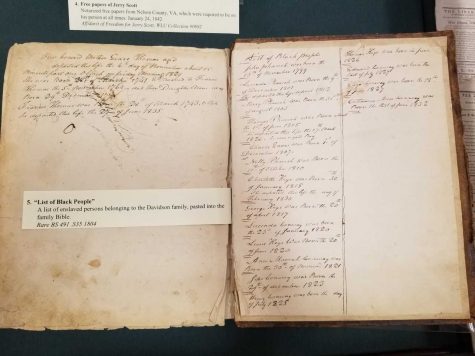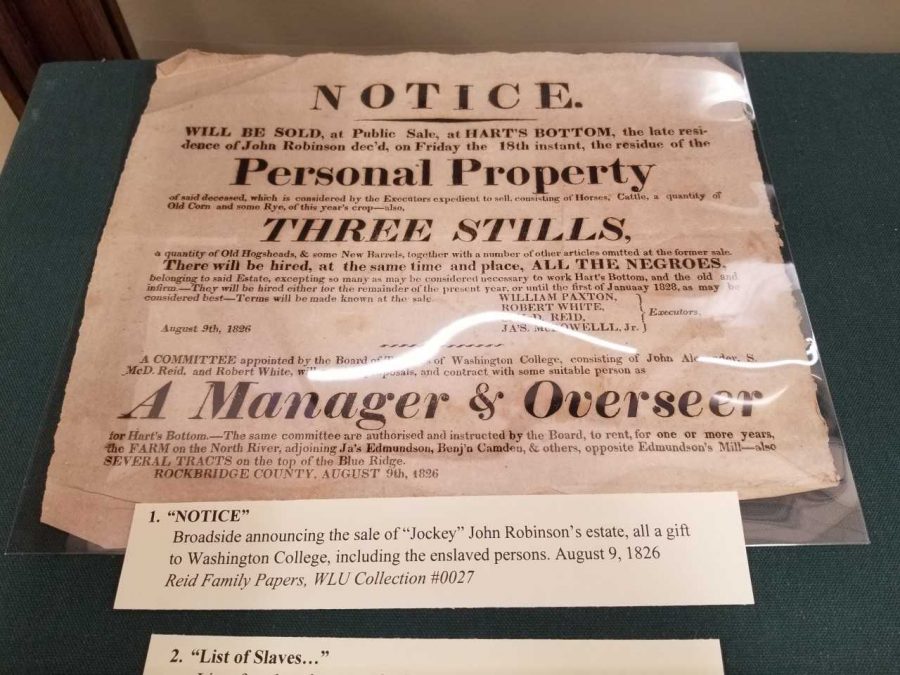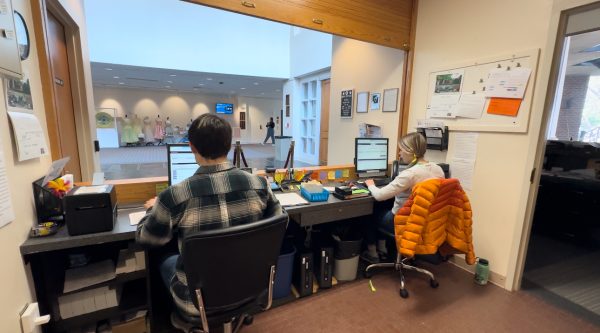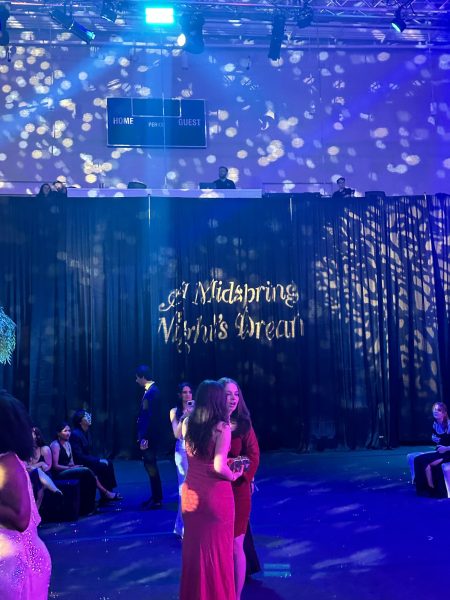University continues to review black history through working group
“African Americans at Washington and Lee: A Timeline” is accessible on the university website.
An advertising broadside from Aug. 9, 1826, announces a public sale of John Robinson’s personal property, including horses, cattle, corn and three stills, in Special Collections. Photo by Amelia Lancaster, ’22.
March 4, 2019
What began in 2013 as a working group commissioned by former university president Ken Ruscio to explore the history of African Americans on campus has grown into a large-scale historical research project to continue uncovering untold stories.
The Special Collections and Archives department contains countless artifacts and documents dating back to the university’s founding — sources that became vital to the operations of the new working group.
“Special Collections becomes a bit of a nerve center in terms of gathering material,” said Tom Camden, head of the department and member of the working group.
It’s home to John Robinson’s estate papers, letters between university administrators during integration and historic photographs and issues of the Ring-tum Phi reporting issues of race on campus and in the broader national context.
When John Robinson died, he left his entire estate to the university (then Washington College), including between 73 and 84 enslaved African-American men, women and children. Robinson was buried on campus, marked by an obelisk on the front lawn of the Colonnade, and an academic building was named after him before the Board of Trustees changed the name in 2018.
“The initial impetus was for the committee—or the working group we call ourselves—was to look at the history of enslaved people in their relationship to the campus,” Camden said. “Some people knew about the Robinson legacy. Many people did not. I think it’s one of those things where people knew about it, but they didn’t talk about it.”
The group needed an accessible and presentable way to organize the stories they uncovered to keep up with the growing mass of information and source material. That’s when they created “African Americans at Washington and Lee: A Timeline,” displayed on the university’s website.
The timeline incorporates photographs, audio and video media to create the dynamic presentation of the history it holds.
It begins in 1795 with the story of John Chavis, “the first known African American to receive a college education in the United States,” and ends with the renaming of Robinson Hall in his honor in 2018.
Other recorded milestones:
1961: The University Christian Association’s invitation to Martin Luther King, Jr. to speak on campus. It was rejected by the Board of Trustees.
1963: Ralph Ellison became the first African American to speak in Lee Chapel. The timeline features a clip from the Ring-tum Phi about the event.
1966: Dennis Haston is the first African-American undergraduate student to matriculate, though he transferred after his first year. Leslie Smith is the first African-American student to attend the law school.
1971: The Student Association for Black Unity (SABU) forms.
1977: SABU students stage a sit-in in the office of university president Robert Huntley after an African-American student was convicted of an honor violation to express discontent of the lacking number of black faculty and students.

The working group was restructured when Will Dudley became president of the university in 2017. It grew from eight to twelve members, and the group now also has a student, MaKayla Lorick, ‘19, who is compiling oral histories from black alumni and faculty such as history professor Ted DeLaney.
As a member of the working group, DeLaney also contributed his own memories to the timeline. He said he believes the project plays an important role in the recruitment of black students to campus.
“What the timeline does that I think is significant is that it not only places African Americans at Washington and Lee, but it also serves as something that potential African-American students might find on the website as they are exploring what Washington and Lee is about,” DeLaney said. “And I must say that if, magically, I was 18 years old again and I was looking for a college to attend, I don’t think that I would be interested in attending a school where I could not find some information about what the African-American experience at Washington and Lee had been.”
The move by Ruscio and other university presidents across the United States was inspired by Ebony and Ivy, a book published in 2013 by Massachusetts Institute of Technology history professor Craig Wilder that explores racism and slave labor within institutions of higher education.
Other higher education institutions in Virginia like the University of Virginia and Hampden-Sydney College crafted timelines recounting the history of African Americans at their institutions.
Washington and Lee’s working group began meeting with these other groups in what came to be known as “Universities Studying Slavery” (USS). The organization has since spread internationally, inspiring learning institutions all over the world to recognize the role of black men and women in their histories.













